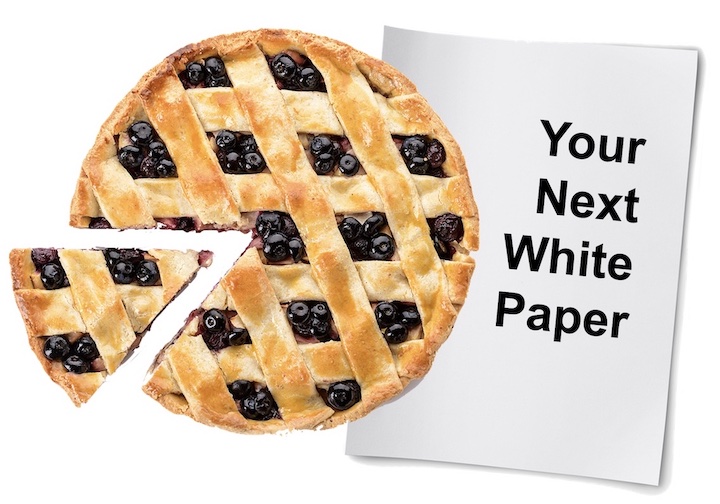
White papers and… baking a blueberry pie?!
Believe it or not, creating a great white paper is a lot like making a blueberry pie.
Think about all the significant items you need to make a scrumptious pie.
It all begins with a good recipe, so you know what to put in (and what to leave out), in all the right proportions.
Then you need to find exactly the right pie plate that fits what you’re trying to make: not too big, not too small.
Next you make the crust, as light and flaky as you can.
Then you pour in all the rest of the ingredients. Most of all, you need lots of fresh blueberries.
After the pie is assembled, you bake it at just the right temperature.
And then you serve it up warm to an appreciative audience.
Each item has a parallel in creating a white paper
So let’s consider each item in turn. Along the way, I’ll sprinkle in some bonus tips and advice.
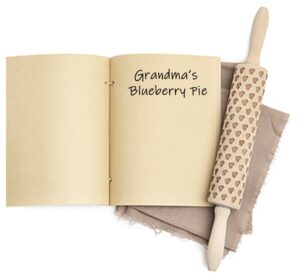
Step 1: Follow a good recipe
Every pie starts with the recipe that tells you what to put in and what to leave out.
That may be your Grandma’s secret recipe, handed down through the generations.
Or it may be a new recipe you found today on the web.
Wherever you get it, that recipe is your guide to making a pie that turns out.
The recipe for a white paper is the plan you make before you start writing.
And that plan is your guide for making a white paper that turns out well.
Your plan should include your business goals for the white paper, likely one of these common alternatives:
- To generate leads
- To engage and re-engage prospects
- To raise the company’s profile
- To support a product launch
- To support a product evaluation
You should also consider your target audience.
What facts and figures do you know about them: their typical age, education, job role, location, and size of the company? All these facts are called demographics.
What do you know about their attitudes, likes and dislikes, fears and joys? All these attitudes are called psychographics.
For more on analyzing your audience, see How to know your audience for a white paper.
Tip: A best practice is to develop a persona of your ideal reader, so you can visualize that one person as you write.
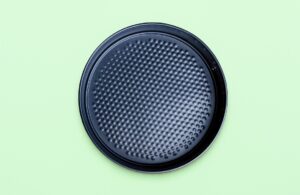
Step 2: Choose the right pie plate
Next, you want to choose the right pie plate: not too big, not too small.
The recipe will often hint at this, or state explicitly to use a 9-inch pie plate.
The pie plate supports and shapes the finished pie, just as a template shapes your finished white paper.
Knowing your business goals and the audience, you can choose the perfect template for your white paper.
Do you need to generate leads for prospects who’ve never heard of the company before?
—Use a problem/solution white paper that focuses on a nagging problem in the industry and presents a new, improved way to solve it.
Do you want to gain visibility or engage prospects during their customer journey?
—Use a numbered list or listicle that promises a quick and easy read.
Do you need to support a product launch or evaluation?
—Use a backgrounder that sums up the main features and benefits of a certain product.
Tip: For a page-by-page template of these three different types of white papers, see my free infographic here.
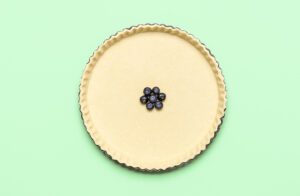
Step 3: Make the crust
There’s nothing like a supremely flaky crust for a fruit pie.
So get out the butter, flour, and salt and go to it.
The crust is the container that shapes and presents your content. In other words, your page design and typography.
The page design for a white paper must be:
- Scannable so busy executives can get the key messages quickly
- Legible so people can read it without a huge effort
- Professional so the document reflects well on the sponsor
The typesetting for a white paper must be:
- Airy with wide margins around the text block for visual relief
- Large enough so people can read it easily, like 11 or 12 point
- Contrasty, like 100% black, so people can make out the letters
If a prospect finds the page design scannable, readable, and professional, they may well keep reading.
If they find the type airy, large, and contrasty, they’ll keep reading.
If not, they will give up. It’s that simple.
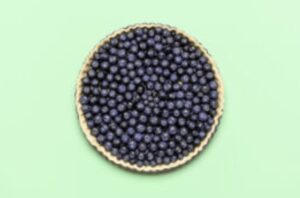
Step 4: Pour in the actual ingredients
After the crust is in place, pour in all the other ingredients for your pie.
Most of all, you want beautiful big blueberries fresh from the farmer’s field.
Plus some sugar and perhaps cinnamon or lemon juice for extra zing.
Finally, you smooth everything down so it’s ready to bake.
This is like creating the text and graphics for your white paper.
The berries are the actual content, including sources to back up your statements.
The sugar and spices are the graphic elements: text organizers, graphics, and pictures that add more appeal to your paper.
Tip: Text organizers include any visual element you can create with your keyboard without being an artist: boldface, bullets, headings, pull-quotes, and tables. Include some text organizers on every page to break up the text.
Finally, you polish up your content to make sure it’s presentable.

Step 5: Bake it in the oven
When it’s all ready, you pop your pie into a preheated oven.
But the temperature has to be just right:
- Too cool, and your pie will be soggy and unappealing
- Too hot, and all your effort will burn to a crisp
This is rather like circulating your draft white paper to reviewers.
You’re getting near the end of the process, but your paper still needs this final step to bake in the quality.
So you want your reviewers to look for things to improve, like any gaps in the argument or any places where the voice wavers.
But the temperature of the review process has to be just right:
- Too lax, and your paper will include errors or gaps in logic
- Too severe, and all your effort will get trashed
Tip: Make sure reviewers look for high-level issues. Is the voice right? Is the argument tight? Will this engage your ideal readers? You don’t need them to point out typos; your software can take care of those.
And when you get comments, listen.
I believe that if one person says something about a draft, many more will think the same thing unless I do something about it.
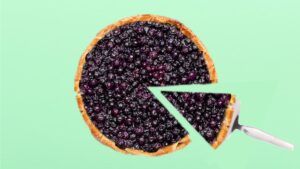
Step 6: Serve it up to your prospects
When your pie is baked, you put out the call that it’s ready.
Then you serve it up to your eager guests, every piece on a plate with a fork and maybe a big dollop of ice cream.
That’s a lot like publishing your finished white paper with an inviting landing page.
You want to show prospects a thumbnail of the cover so they see what they’ll get. This is like the smell of a fresh-baked pie. You want to tantalize them.
And make sure to emphasize the benefits they’ll get from spending time on it.
Your landing page should promote your white paper — that’s it. For now, forget everything else your company does. Don’t confuse the issue.
Tip: If you need a registration form, ask just a few questions: name, company, work e-mail, and zip code are plenty. The more questions you ask, the fewer downloads you’ll get.
Conclusions
Here’s a table that sums all this up.
| Blueberry pie | White paper |
|---|---|
| 1. Good recipe | 1. Good plan |
| 2. Sturdy pie plate | 2. Proper structure |
| 3. Light, flaky crust | 3. Attractive design |
| 4. Beautiful blueberries | 4. Engaging content |
| 5. Reliable oven | 5. High-level reviews |
| 6. Serving plate with ice cream | 6. Compelling landing page |
So there are the six ways that making a blueberry pie is like creating a white paper.
If you’ll excuse me, I have to go to the kitchen. I think there’s one piece of pie left in the fridge.
What ingredients do you think a good white paper must have? Please leave your comment below.
Want to hear whenever there’s a fresh article on this site? Subscribe here to stay in the know on long-form content. From time to time, we’ll also send you word about some great new resource or training. And you can unsubscribe any time.




Tasty analogy! So can we now talk about what flavour pie with what flavour ice cream?
LOL! Absolutely Matthew!